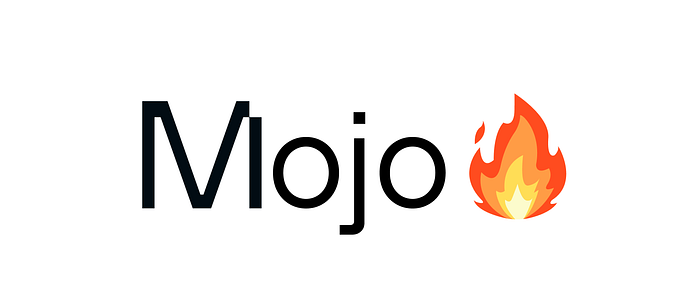Yeah… then AI happened, and suddenly we're all Googling "best language for 2025" at 3 AM with coffee in one hand and regret in the other.
2025 has officially entered the chat — and it's bringing a new wave of programming languages that are faster, safer, and so much smarter than our caffeine-soaked brains.
So buckle up, grab your IDE, and let's meet the 7 new coding languages stealing developers' hearts (and Stack Overflow tabs) this year.
1. Mojo — The Python That Went to the Gym

If Python and C++ had a baby that drinks protein shakes and runs on GPUs, you'd get Mojo.
Mojo promises Python's simplicity but with performance so fast, your old scripts might start crying. It's designed for AI, ML, and data-heavy workloads — all while keeping the "just write it and pray" syntax we love from Python.
Why devs love it:
- Near-C speed ⚡
- Compatible with the Python ecosystem
- Ideal for AI frameworks and GPU workloads
Fun fact: Mojo's tagline could easily be "I lift heavy loops."
👉 If you've ever wondered how Python could've evolved differently, check out this nostalgic read: Dead Programming Languages We Loved and Lost.
2. Carbon — Google's Gift to C++ Developers with Trust Issues

Meet Carbon, Google's "experimental successor" to C++. Translation: we broke too many things in C++, let's start fresh.
Carbon is basically C++ but with better memory safety, faster compile times, and saner syntax. It's like giving a 1990s sports car a modern engine and Bluetooth.
Why it's trending:
- Backed by Google 🧠
- Safer and cleaner than C++
- Designed for large-scale systems
Developers say switching to Carbon feels like therapy after years of pointer trauma.
3. Bosque — Microsoft's Attempt to Make Code "Boringly Reliable"

Microsoft's Bosque language is built on a wild concept — no loops, no mutable states, no weird side effects. The goal? Zero runtime bugs.
Bosque is all about clean, predictable code — perfect for cloud apps and microservices that don't want surprises.
Why you should care:
- Inspired by TypeScript syntax
- Eliminates accidental complexity
- Promotes functional programming best practices
Imagine if JavaScript finally cleaned its room and stopped throwing "undefined" errors. That's Bosque.
4. Val — The Chill Cousin of Rust
You know Rust — the overachiever of programming languages with a "safety first" tattoo? Val is like Rust's laid-back cousin who says, "Yeah, I'll handle memory safety… but let's not stress."
It brings value semantics (hence the name) without the compiler anxiety Rust sometimes causes. Perfect for systems programming, game dev, and real-time applications.
Why it's exciting:
- Focused on clarity + performance
- Strong type system
- Easier onboarding than Rust
Finally, a systems language that doesn't make you question your life choices.
5. Gleam — Functional Programming That Doesn't Make Your Head Hurt

If Elixir and Rust went to couples therapy and worked things out, they'd come back as Gleam.
It's a functional language that runs on the BEAM VM (same as Elixir) but compiles to fast, type-safe code.
Why devs adore it:
- Type-safe like Rust
- Friendly syntax
- Great for scalable web apps
Gleam proves that functional programming doesn't have to feel like solving math proofs at 2 AM.
6. Fika — JavaScript's Scandinavian Minimalist Makeover
Fika, named after the Swedish word for "coffee break," is a new web-friendly language aiming to simplify the chaos of frontend development.
Think TypeScript without the drama, or JS with an espresso shot of sanity. ☕🇸🇪
Why Fika might surprise you:
- Minimalist design
- Great for WASM and web apps
- Clean syntax for prototyping UI logic
It's still small, but if you're tired of npm install existential-crisis, Fika might just be your next crush.
7. Vlang — The "I'll Just Rewrite It" Language

V (or Vlang) is like Go, but simpler — fast compile times, memory safety, and no dependency hell.
It's built to create efficient cross-platform apps and even compile itself in less than a second (take that, CMake).
Why people are watching it:
- Simple, readable syntax
- Cross-compilation magic ️
- High performance
It's perfect for developers who say, "I'll just rewrite the whole thing" — and actually mean it.
Honorable Mentions
Let's pour one out for languages that didn't make the main list but are still stirring GitHub repos:
- Zig — the C replacement nobody saw coming
- Grain — WebAssembly-ready and high-performance
- Ballerina — for cloud-native integration lovers
How to Choose the Right One in 2025
Before you panic-install 7 compilers, remember this: you don't need to master them all.
Instead, think about your goal:
- 🧠 AI/ML → Mojo
- ⚙️ Systems → Val / Carbon
- 🌐 Web Dev → Fika / Gleam
- ☁️ Cloud Apps → Bosque
Start small, play around, and follow your curiosity. That's how innovation happens — and how great devs accidentally break things in fun new ways. 😉
Bonus Read: Speed Up Your Python by 80x
If you're still clinging to Python (we all do it 😅), you'll love this guide: 👉 Run Python Code 80x Faster with Cython.
Because sometimes, you just need your old language to run like a new one.
Final Thoughts
Tech changes fast — but curiosity, passion, and caffeine never go out of style.
If this guide helped you discover a new favorite language (or made you laugh), please clap this article 👏 so more developers can find it.
And if you'd like to support my work, you can buy me a coffee here 👉 https://azeemteli.gumroad.com/coffee
Or better yet — join my free developer newsletter for stories, trends, and spicy tech opinions every week: 💌 https://azeemteli.gumroad.com/subscribe
Stay curious, stay caffeinated, and happy coding!


